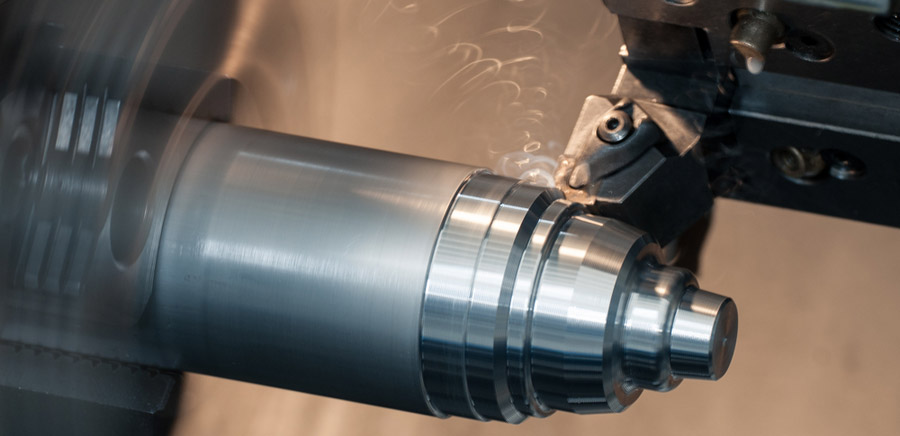In the expansive landscape of modern manufacturing, CNC turning technology stands as a brilliant cornerstone. From everyday electronics to high-end aerospace components, CNC turning provides a robust and reliable solution for the precision machining of complex parts, thanks to its high accuracy, efficiency, and advanced automation capabilities. In recent years, rapid technological advancement and the growing demand for industrial upgrading have placed CNC turning at the heart of a profound transformation. A series of emerging trends now define its future trajectory.
1. Intelligence and Automation
Smart Control:
The future of CNC turning lies in the deep integration of artificial intelligence (AI) and machine learning. These technologies enable real-time analysis of production data, allowing machines to automatically adjust operational parameters and optimize performance. As a result, machining precision and productivity improve significantly.
Automated Production:
CNC turning will increasingly integrate with automated warehousing, material handling systems, and robotics to form fully automated production lines. This reduces human error, increases stability, and improves overall production efficiency.
For example, in aerospace manufacturing where complex curved surfaces are common, adaptive machining technology plays a vital role. Vision recognition systems act like precise, perceptive eyes, capable of detecting part deformation in real time. These systems dynamically adjust tool paths and cutting parameters, ensuring tight tolerances are met even for highly intricate parts.
2. Ultra-Precision Machining
As industries demand increasingly tighter tolerances, CNC turning continues to push the boundaries of precision. In the semiconductor sector, component requirements have entered the nanometer scale. Modern CNC lathes equipped with high-precision spindles, guideways, and feedback control systems are capable of achieving micron- and even submicron-level accuracy.
In addition, advancements in ultra-precision tooling have significantly enhanced machining capabilities. New tool materials and improved fabrication processes result in sharper, longer-lasting edges, allowing for the controlled removal of minimal material. This satisfies the demands of high-end industries for exceptional surface quality and dimensional precision.
3. Green Manufacturing and Environmental Responsibility
Energy Efficiency and Emission Reduction:
Next-generation CNC turning equipment will place greater emphasis on reducing energy consumption and emissions. This includes optimized machine design and the use of sustainable materials.
Eco-Friendly Machining Techniques:
New lubrication and cooling technologies minimize harmful fluid usage, while optimized cutting strategies and advanced tool geometries reduce material waste.
For example, in aluminum alloy machining, the use of ceramic tools enables efficient dry cutting without coolant, eliminating environmental contamination and cutting waste fluid treatment costs. At the same time, surface finish quality and throughput improve. In the machining of ultra-hard materials, diamond-coated tools have demonstrated exceptional performance. These tools significantly extend tool life—by several times compared to traditional options—boosting both processing efficiency and economic viability.

4. Integration with Additive Manufacturing
Combining additive manufacturing (3D printing) with CNC turning will become a prominent trend. 3D printing is well-suited for producing complex internal structures, while CNC turning excels at refining external surfaces and dimensional accuracy. This hybrid approach minimizes material waste and enhances overall part performance.
5. Customization and Flexible Manufacturing
In response to diverse market demands, CNC turning will become more agile, supporting small-batch and multi-variety production. This flexibility is essential for meeting the growing demand for customized and personalized components.
6. Market Growth Outlook
The market for CNC turning technology is experiencing robust growth. According to data from MarketsandMarkets, the global CNC market is projected to exceed USD 100 billion by 2026, with a compound annual growth rate (CAGR) of 8.7%. This strong upward trend reflects sustained demand for CNC technology in the manufacturing sector. Regionally, the Asia-Pacific market is expected to serve as a key growth engine, accounting for over 45% of global market share.
Conclusion
CNC turning technology is evolving rapidly in the direction of being “smarter, more precise, more interconnected, and more environmentally friendly.” In the future, it will play an even more critical role in strategic sectors such as aerospace, new energy, and semiconductors. This transformation will drive manufacturing toward higher quality, greater efficiency, and improved sustainability.
For businesses and professionals in the field, keeping pace with technological advances and embracing innovation are essential strategies for gaining a competitive edge in a dynamic market.



